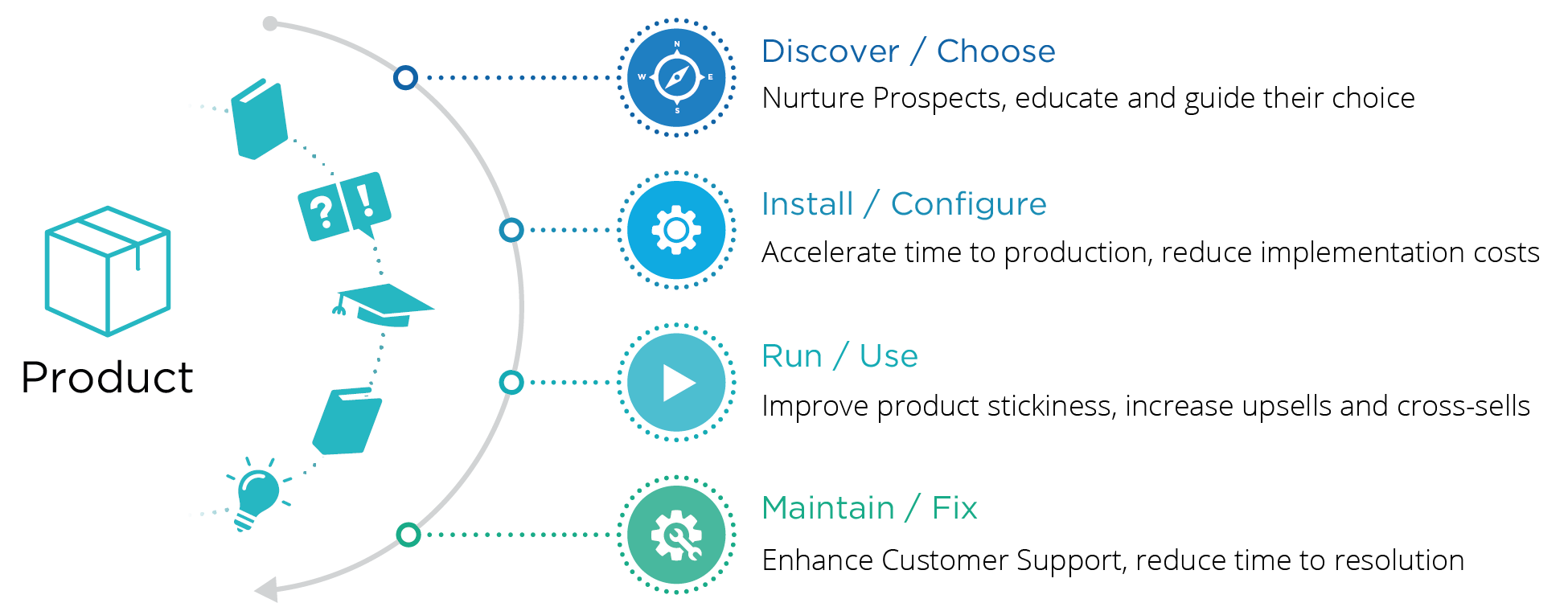There’s a significant difference between investment and cost. The former is supposed to generate a return as a future revenue or a reduction in company costs. The latter is simply an expenditure of money and time.
Costs are an unavoidable part of doing business and entire industries exist to help decision makers minimize and optimize their costs. The office space that you rent, the service vehicles you buy, even the computers that tech doc teams use to create content are all examples of costs that organizations incur.
In this model, where does technical documentation sit: is it an unproductive sunk cost, or an investment that will deliver measurable and ongoing value?
Technical Documentation – An unproductive cost?
Almost systematically, companies view technical documentation as a cost and the tech doc department strictly as a cost center. Organizations know precisely how much they spend on technical documentation and do their best to control the cost of people, systems and solutions (authoring tools, CMS, publishing systems, and more) allocated to tech doc creation.
In the tech industry, it is generally estimated that the production and maintenance of technical documentation represent on average some 10% of the total product design cost. It is a significant portion of the overall product cost that organizations perceive as a necessity. The reasons for the spend are widely known and undisputed:
- There is simply no possible usage of technical products without a proper tech doc.
- Product content is required for the visibility of the product on globalized markets.
- Technical documentation is compulsory for compliance and regulation reasons and legally binding in many industries.
Having these constraints and restrictions in mind, organizations mostly consider the costs incurred by not having technical documentation. But they rarely recognize that documentation has a value of its own.
Without a value opposite the cost, there is no notion of investment, just an unproductive cost. Which is not what tech doc is.
From Cost to Investment – Highlighting the Value of Content
Technical documentation is a powerful tool for winning business, fostering product adoption, and boosting operational efficiency. To wield this tool and carve out the added value of tech doc, one has to focus on its purpose. At this point, it becomes possible to translate the benefits of its usage into real, substantial cost savings and financial gains, and demonstrate that it is a profitable investment.

Product documentation delivers value at each stage of the product journey.
Discover/Choose:
It’s not only in retail and e-commerce that product documentation plays a critical role in buying decisions. According to a Forrester survey, 74% of B2B buyers review user documentation as part of their purchase cycle.
Technical documentation is a strong differentiator on the market. If it is available from a trustworthy source, preferably the vendor’s website or documentation portal, it is the first contact potential buyers have with a product or solution, long before they even start speaking to a sales team. The availability and reliability of technical documentation is an efficient way to get a product or solution on a buyer’s shortlist before any sales effort is made.
On top of the positive impact of making technical information widely available to the market, increasing visibility, and lifting product awareness, many vendors now acknowledge that consistently publishing extensive product content is a key factor in increasing trust in the product: release notes, information on new modules, features and functionalities build the credibility of the vendor and demonstrate its ability to deliver.
What dollar value can companies expect from this and how can they measure the benefit of exposing tech doc to potential buyers?
To answer this question, one must follow the value chain and quantify both cost reductions and additional revenues:
- In terms of Product Visibility: From an increase in website or documentation portal traffic to improved web referencing and SEO performance, companies can measure the development of their product visibility and brand awareness while significantly saving marketing spend.
- In Sales Development: As they massively publicize accurate product content, organizations can measure increases in inbound leads and improvements in their conversion ratios, which ultimately result in additional sales and new business revenue.
Examples such successful initiatives are easy to find among Fluid Topics’ customers. A leader in digital reality solutions revealed that they had no significant internet presence before they implemented their documentation portal with Fluid Topics in 2019. In less than a year, they achieved the top four Google slots for all their most important SEO keywords.
Install/Configure
By definition, an administrator or user who implements a new solution has no experience with the product they’re installing. The best and most useful resource they have, apart from any vendor services available at that stage, is the product tech doc. The availability of tech doc and its utility at that point in the product use cycle gives a flavor of what the product experience will be across the entire user journey. The acceptance of and adherence to a product owe a lot to the technical documentation. Equally, technical content has the potential to strongly accelerate the implementation process and becomes a key factor of the success of the implementation of a new solution.
From there, an organization can look closely at some profitability metrics and evaluate the benefits delivered by technical documentation. Time to production, value of early invoicing, project costs in person days, number of projects managed by FTE are key indicators that companies can measure and improve with the presence and availability of relevant technical documentation, and quantify the value of technical content.
Run/Use
The daily usage of the product is where the need for tech doc is the most obvious. Product documentation is the number one resource for product discovery but in addition, it drives further product adoption continuously through the presentation of new releases, features, options, and functionalities.
Stronger adherence to product and user satisfaction have measurable impacts on revenue, both by improving product stickiness and increasing the usage of product via the buy-in of extended functions. The most significant metrics to watch are the reduction in churn rate (a measurable indicator of customer loyalty and engagement) and the increase in upsell and cross-sell that a relevant, contextualized product documentation can foster.
Maintain/Fix
In the domain of technical products for businesses, users have a strong preference for investigating features and solving issues quickly by themselves instead of opening support tickets. Troubleshooting is where technical documentation is at its strongest and where more demanded. Here, an easy access to an exhaustive, up-to-date tech doc encourages user autonomy with the product and accelerates problem resolution.
The first area where the value of tech doc can be quantified here is in the optimization of customer service: an accurate self-service technical documentation has a strong impact on case deflection and lowers support team costs.
While a conservative estimate might be that self-service documentation can deliver a drop of 15% in new open cases, swissQprint, a leading manufacturer of hi-tech printers realized a decrease of 34% of support tickets immediately after implementing their documentation portal with Fluid Topics.
Beyond the reduction in new support tickets, the benefit of technical documentation can be expressed in terms of a reduction in employee search time as well as in issue resolution time, and of an increase in first-fix rates and uptime, which are closely tracked by tech companies.
As an example, a manufacturer of high-tech devices found out that its field service engineers were saving an average of 4 hours in product information search time per month after implementing a documentation portal along with Fluid Topics cutting-edge search engine. This translated into significant cost reductions and efficiency gains.
Conclusion
By examining the benefits of technical documentation with regards to its usage, the value of tech doc becomes obvious and clearly significant. There is little doubt that tech doc is not a simple expenditure and there are many angles and areas of a business where a return can be found.
There is, however, one important condition that the technical content must meet to reach its potential and deliver that value. Producing good and exhaustive documentation is not enough to ensure it will be used when needed and as expected. At all stages of the product journey, the value of tech doc is linked to the fact that the content is reaching its users. In the next article in this series we will examine how to meet this goal in order to guarantee the realization of the value of tech doc.




